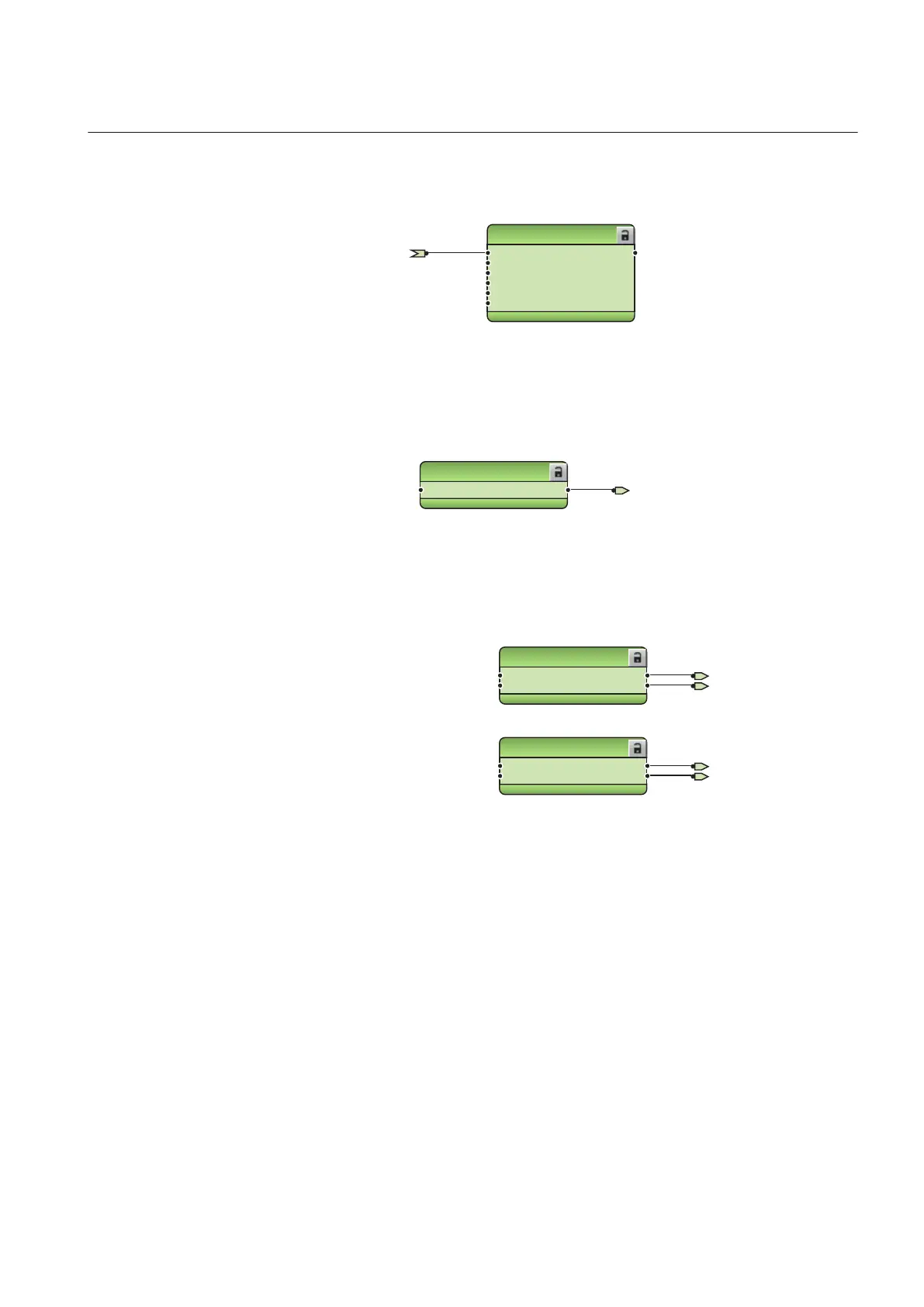This signal is not connected in the configuration. This output can be used for sending
a blocking signal to the relevant overcurrent protection stage of the IED at the
infeeding bay.
OR6
B1
B2
B3
B4
B5
B6
O
DPHLPDOC2_START
GUID-7AEA0818-3740-426B-89CB-128FC04D5E3D V1 EN
Figure 507: Upstream blocking logic
The output BLK2H of three-phase inrush detector INRPHAR1 enables either blocking
the function or multiplying the active settings for any of the available overcurrent or
earth-fault function blocks.
INRPHAR1
BLOCK BLK2H
INRPHAR1_BLK2H
GUID-8A44950A-08F8-487A-8285-291BBBFC04C7 V1 EN
Figure 508: Inrush detector function
Two negative-sequence overcurrent protection stages NSPTOC1 and NSPTOC2 are
provided for phase unbalance protection. These functions are used to protect the
feeder against phase unbalance.
NSPTOC1
BLOCK
ENA_MULT
OPERATE
START
NSPTOC2
BLOCK
ENA_MULT
OPERATE
START
NSPTOC1_OPERATE
NSPTOC2_OPERATE
NSPTOC1_START
NSPTOC2_START
GUID-9F91B557-1412-4CB4-897C-9D4BEBCC31F4 V1 EN
Figure 509: Negative-sequence overcurrent protection function
Three stages are provided for directional earth-fault protection. According to the
IED's order code, the directional earth-fault protection method can be based on
conventional directional earth-fault DEFxPDEF only or alternatively used together
with admittance-based earth-fault protection EFPADM or wattmetric-based earth-
fault protection WPWDE or harmonics-based earth-fault protection HAEFPTOC. A
dedicated protection stage INTRPTEF is used either for transient-based earth-fault
protection or for cable intermittent earth-fault protection in compensated networks.
1MRS756378 S Section 3
REF615 standard configurations
REF615 329
Application Manual

